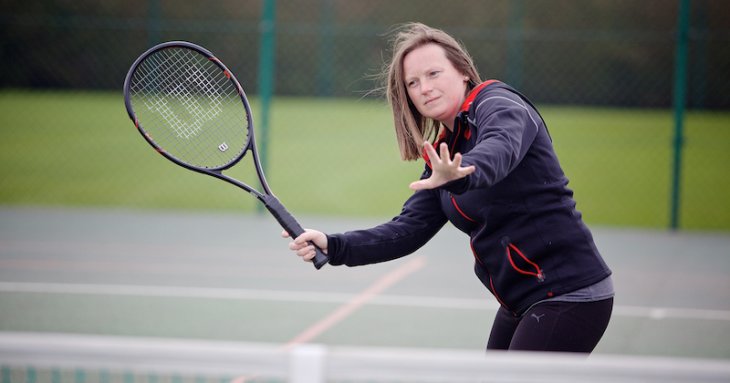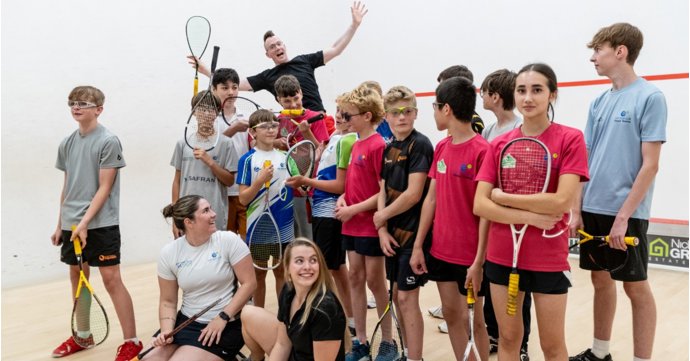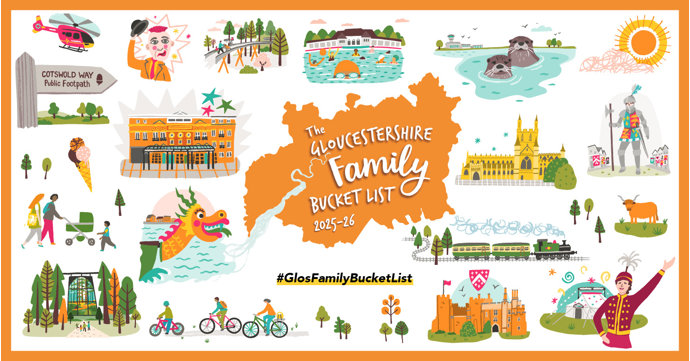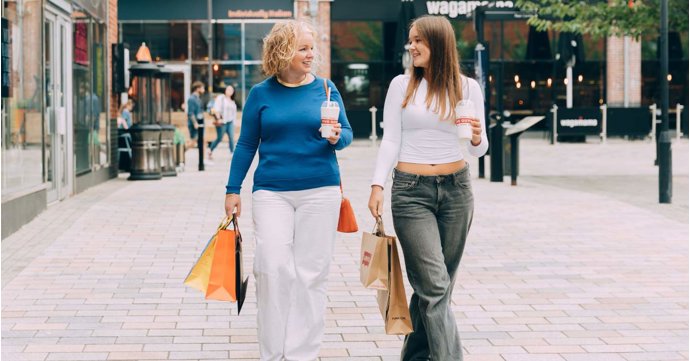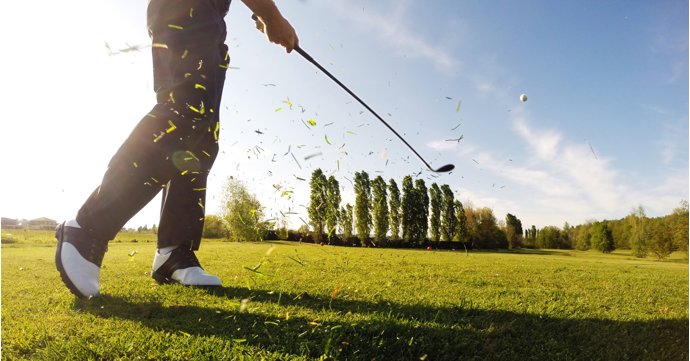Getting your heart pumping and brain working, tennis is the full-body workout that keeps on giving; with a whole host of physical and mental health benefits that will keep you feeling good after you leave the court.
Not only that, tennis players at Cheltenham’s popular East Glos Club can enjoy being part of a thriving social community, with regular social events and opportunities both on and off the court.
To find out more, SoGlos spoke to one of the club’s professional coaches, Esther Curtis, about the health benefits of the sport – as well as everything members can look forward to, from smashing opponents on the court to beating them at quiz nights…
Meet the expert – Esther Curtis, senior performance coach at East Glos Club
Esther Curtis has been coaching at East Glos Club for over 12 years, helping everyone from tiny tots to adult players to hone their skills – as well as nurturing young tennis stars in the club’s junior Performance Academy programme. She also captains the Gloucestershire ladies’ and girls’ 18 and under teams at county level.
East Glos Club is a fun and sociable members’ club in Cheltenham that welcomes players of all ages and abilities, offering tennis, squash, racketball and padel; with all-weather, floodlit courts, expert coaching and plenty of opportunities for competitive play.
What do you enjoy most about working at East Glos Club?
Being outside, when the weather’s better! And probably the variety you get to see, working and interacting with lots of different people; one coaching session can be completely different to the next and there’s always a different challenge. I like teaching different sessions as well as coaching and group sessions, like cardio tennis.
What does the cardio tennis involve? That sounds fun!
Cardio is really good fun! We do it to music and it’s more like circuits where we do lots of hitting tennis balls but mainly running around. We run through ladders and we’ve got lots of equipment on the court. It does involve being able to hit a ball but you don’t necessarily need to be able to play any tennis – no one is hitting the ball back to you!
Do you take part in the social side of things at the club, as well as coaching?
I have done! A lot of the time I’m busy coaching but we do things like quiz nights which are always good fun and a great chance to integrate with the members. It’s a chance for them to get to see you in your off-court capacity, as well as on court.
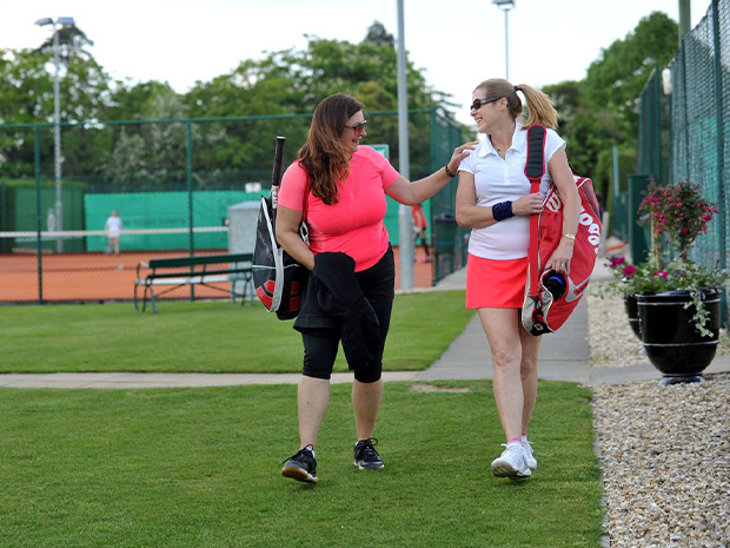
Other than the quiz nights, is there anything else members can look forward to?
The club regularly runs things like social barbecues, when the weather’s better; we do a summer party; also, Christmas parties and you can book to have Christmas dinners and lunches.
There’s a group of members who play bridge, so they have bridge nights; we do wine and cheese evenings and things like that, so there’s quite a lot going on socially. It’s a lovely community.
It sounds it! What do you think are the benefits of joining a tennis club, rather than play-as-you-go?
I think when you join a club, you get much more of an opportunity to integrate with members and meet new people. You can get involved in social tennis lessons and there will be people like you who you can get to know.
You’ve got the opportunity to start making friends who you might arrange to play with in your own time in a more social setting. And with word of mouth, they might recommend new things to you that they’ve already taken part in and enjoyed.
If you pay and play, you get a great experience on court with the coach and other group members, but it’ll last for an hour and then you’ll go. Joining gives you a chance to take part in more of those activities and meet more people; and also, we’ve got plenty of opportunities for competitive play, such as ladders and league teams. So again, you get the chance to meet people who are at a similar level to you.
As a coach, what would you say are the biggest physical health benefits of tennis?
I’ve always considered tennis to be an all-round physical sport – obviously you use your arms a lot, but you can’t play tennis without your legs! So, you’re getting a full-body workout. It’s good for core strength as well, as you’re doing a lot of things above your head like serving and smashing. Physically, you’re using lots of different muscle groups in the body when you play tennis, from your legs all the way up.
Generally, it will increase your overall level of fitness as an aerobic exercise – especially something like the cardio tennis; it’s brilliant for fitness. Those who are inclined to check their wrist watches or their smart watches will tell you that they’re burning somewhere around 400-plus calories in an hour.
It’s a good workout for your brain, as well. Tennis involves decision making, like where to hit the ball or how you’re going to hit it; and problem solving, working on tactics or if you’re working on something technically, you’re having to concentrate on the various physical aspects of what you’re trying to do.
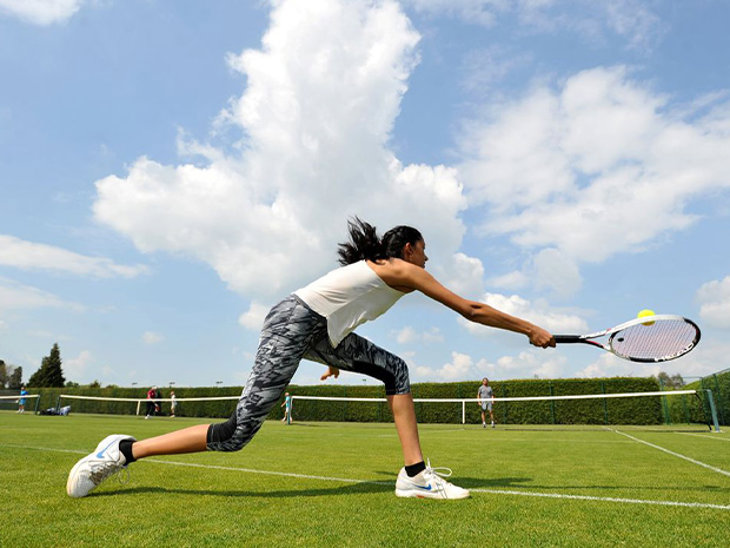
In terms of your brain, there’s mental health benefits to playing tennis as well. How do you think the physical benefits feed into that?
Overall, any sport is good for wellbeing. You’re releasing endorphins and your energy levels are going up. Exercise is going to elevate your mood and make you feel better – especially at a club like East Glos where the tennis is all outside in the fresh air.
We’ve had a lot of new members since the pandemic who have reassessed what they want to do with their spare time after being cooped up in their house for so long. A lot of people who have joined the club or come to get involved with some of the coaching, they’ve changed their mindset about how they want to spend their free time. They want to be outdoors and they want to be active – it’s been quite a big difference over the last year.
I think it also helps if you’re playing socially, or especially if you’re playing competitively, you’re kind of focusing on something different, so it gives you a chance to take your mind off whatever your day-to-day stresses might be in life. If you’re focusing on how to beat your opponent instead then it gives you a bit of a release – and it can help with frustration as well, if you’ve got any aggression building up inside you then it’s quite a good release of energy to bash the ball.
You’re always on the court with someone else – even if you’re playing singles, you’ve always got an opponent, so there’s always a social aspect to the game as well.
You’ve mentioned competitive play a few times. Can you tell us more about how you can support members if they want to get into competitive play?
Within the club, as a member, you can be part of the ladders. So, if you were just starting out, you’d be put in the bottom box of the ladders with four or five other people – and you get given a month to arrange to play those players. And then, if you’re more successful, you move up to the next box or you might end up staying in the same one, but each month the ladders tend to move up and down – so each month you’ll end up playing different people.
You get a chance to play different people and you’ll quite quickly start to find where your level is. So, if you come in and you’re a relatively competent player and you start in the bottom box, you’ll probably find yourself over the first couple of months moving up a couple of times. And you’ll start to find your level, where the players you’re playing against are a similar ability.
Obviously, the coaching team is always on hand if you get someone who’s quite new to the club and never really played tennis before, then we would be able to advise the best places for them to fit.
We’ve also got all of our league teams at the club – I think we’ve got eight men’s teams and eight ladies’ teams in the summer and winter league, with weekly opportunities to play against other teams in the county on a competitive level each season.

And that’s suitable for players of all abilities to get involved in?
Yes, from the A Team right the way down to the G Team. Because it’s quite a large club with a lot of members, a lot of the teams are of a relatively similar level. So yeah, there’s definitely an opportunity for all levels to get involved – in the ladders as well, you don’t need to meet a certain criteria to go into the ladders if you want to play competitive tennis.
It’s a great way to start off your competitive journey as well. And you’re meeting fellow members who are having the same experiences, so hopefully you’re having fun getting to know people as well as a competitive game.
Also, once a year we hold our Club Championships so that’s another chance for any member of the club to enter. We’ve got all ages groups, all the way up to our over 70s category; playing singles and mixed doubles all throughout the summer. Then Finals Day is in the beginning to mid-September, where everyone comes along to watch and we’ve got a barbecue on the go.
That sounds lovely! So, if someone who’d never played tennis before came to you for coaching, what would be your top tips for a complete beginner?
I would always recommend you have some form of coaching session initially. It can be a good idea to have an individual lesson to get that undivided attention and personalised tips about what you might need help with.
Having a little bit of help initially with the fundamentals of technique, like how to hold a racket, where your hand is, where your grip is, the positioning of your feet and your body. Nailing the fundamentals will really help when you’re stepping on a court properly in a more social setting. It can give you a bit more confidence as well, just to be a bit clearer on what you’re trying to do so you can go away and start putting it into practice.
We do adult groups for complete beginners, too – the benefit of being in a group scenario is it tends to be with other people who are in a similar situation as you.
How long would it take a novice player to start seeing improvements in their technique?
It’s a bit subjective but if you’ve got a complete beginner who really hasn’t picked up a racket before, it’s much easier to make new habits than break old ones. You can find that you make that initial progress quite quickly – whether it’s a group or individual session, you should find that by the end of your first hour to hour-and-a-half session that you’ll see some improvement.
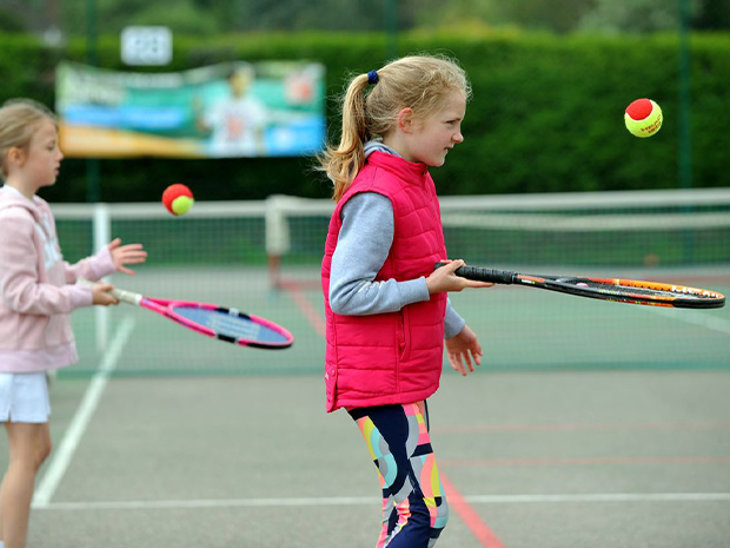
I know you have a lot of junior players too. What would you say are the main physical and mental health benefits of tennis for children?
For kids, we tend to find that a lot of children that come into our development programme who haven’t played a lot of tennis before are really looking for it to be initially something that is a fun, recreational activity outside the classroom.
The main goal for us, when you get kids coming in for the first time, is that they go away and they’ve had fun and want to come back.
Again, you have the social aspect for kids being in group coaching sessions; but it’s really good for children who don’t necessarily enjoy team sports or find it difficult to be in that team environment. So, when they come into tennis, they might be in a group setting with other children, but tennis is an individual sport and their success at it is entirely down to them rather than relying on other people. For some children, that’s what they respond to best. You get kids who really enjoy the individual aspects of playing tennis rather than it being a team sport.
Again, it’s a way of getting them outside and away from their computers at home. They’re getting out in the fresh air and getting the chance to run around.
They’re also challenged in the same kinds of ways we’ve already mentioned; we practice lots of fundamental skills with them, like hand eye coordination through throwing and catching; lots of skills that we try and get them to develop like problem solving and decision making.


